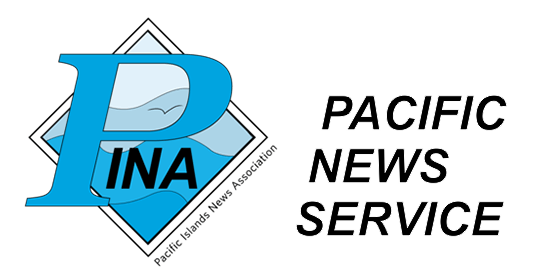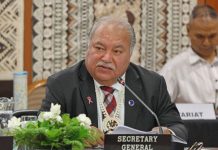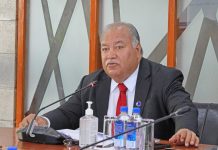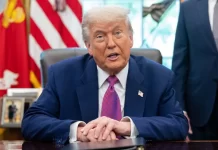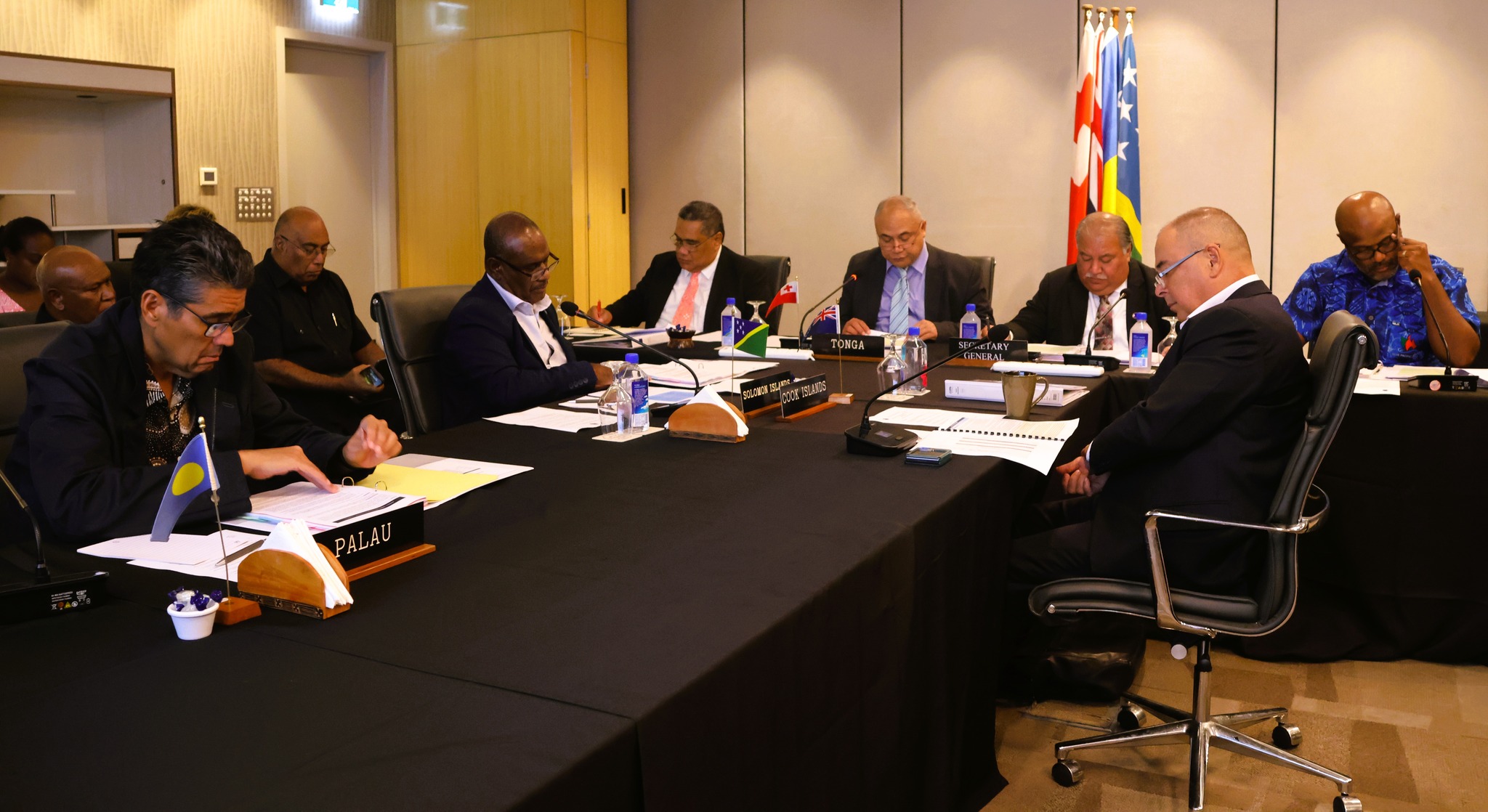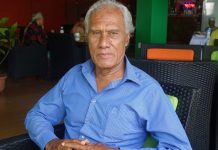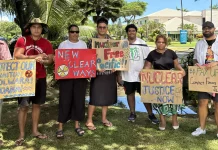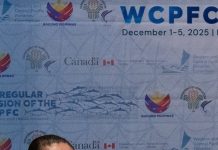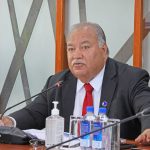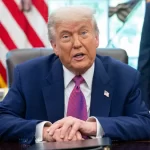The U.S is harming Pacific Islanders, destroying its relationships in the region, and letting China win the competition for influence.
By Camilla Pohle
The Trump administration’s withdrawal from the Pacific Islands – because that’s what is happening – benefits China at the expense of U.S national security.
Washington’s latest series of policy blunders comes at a crucial time when China is seeking to expand its military presence beyond the First Island Chain, which could allow Beijing to project power farther into the region and complicate U.S and allied contingency plans for a war in East Asia.
Building close partnerships with Pacific Island countries could help Washington prevent such an outcome, if U.S leadership were interested in doing that. Instead, the United States is harming Pacific Islanders, destroying its relationships with Pacific Island countries, and letting China win the competition for influence.
And it’s only April.
Since January, the Trump administration has withdrawn from the Paris Agreement, withdrawn from the World Health Organisation, suspended most foreign aid, accelerated deportations, and raised tariffs to an extreme degree with no discernible justification (then most of the additional tariffs were delayed). Any one of these policies would have damaged the United States’ ties with Pacific Island countries; there is no doubt that, collectively, they will severely undermine the United States’ relationships and its ability to secure its own interests in the region. These policies will make Pacific Island countries less likely to seek partnership with Washington in the future and reinforce the perception that the United States is withdrawing from the world stage, ceding ground to an ascendant China.
The right-wing Heritage Foundation – architect of the anti-democratic Project 2025, which is closely aligned with Trump’s policy priorities – acknowledges that China poses a threat to U.S interests in the Pacific. But the foundation’s purported strategy for the region, which could inform the Trump administration going forward, neglects the basic tenets of diplomacy necessary to win such a competition.
It’s simply not possible to strengthen Washington’s ties with Pacific Island countries when U.S foreign policy is harming them to such an extreme degree. Pacific Island countries are among the most vulnerable to climate change in the world, have the least developed health infrastructure in the world, and are especially aid-dependent. They are also resourceful and pragmatic, and they have many other options besides the United States for building international partnerships. The Trump administration is just ensuring that Washington will be increasingly frozen out.
Of course, it’s unlikely that the Pacific Islands were even on anyone’s mind when the White House withdrew from the Paris Agreement or dismantled USAID, and Pacific Island countries aren’t the only ones affected. The bottom line is that whatever progress the United States made in the Pacific during the last couple of years, the White House is throwing it away.
In 2022, under the Biden administration, the United States launched its first-ever strategy for the region. It didn’t always go smoothly: Pacific Island countries questioned Washington’s commitment when funding for the Compacts of Free Association (COFAs) was held up for six months in the U.S Congress and after then-President Joe Biden cancelled his trip to Papua New Guinea. Regional leaders were frustrated by the United States’ insufficient efforts to cut carbon dioxide emissions and its refusal to fairly address the legacy of U.S nuclear testing in the Marshall Islands.
Still, the strategy – which involved opening new embassies and making massive funding increases to address Pacific Islands countries’ own priorities – was largely welcomed, and it made Washington a player in the region again. The United States was actively seeking to secure its interests and influence and to make up for decades of neglect.
Not anymore. Pacific Island countries will go back to being neglected or considered only through the prism of defence. Efforts to militarise the region, absent U.S commitments to combat climate change and address other regional priorities, will continue to deplete whatever goodwill these countries have toward the United States. Analysts often describe the current Republican foreign policy as “transactional,” but that implies that both sides are getting something out of it. It’s better understood to be one-sided: the White House gets what it wants and other countries don’t. Even islands that are solely inhabited by penguins weren’t spared from arbitrary tariffs.
It will take some time to see the full damage of this administration’s foreign policy toward the Pacific, but the only question is the degree of severity. When Pacific Island countries continue to be hit by cyclones and besieged by rising tides, they will remember the Trump administration withdrawing from the Paris Agreement and gleefully celebrating increased fossil fuel production. As they face growing health challenges, many of which are likely to be exacerbated by climate change, they will remember that the United States cut its funding for the WHO and promoted vaccine skepticism.
Palauan President Surangel Whipps Jr said last week during a visit to Australia, “We’ll get through this.” He said he hopes that current U.S policies are a temporary retreat and that the United States will come back stronger. To some degree, Pacific Island leaders have to be diplomatic. But U.S relations with the Pacific will probably get even worse.
Cuts at the State Department won’t help the already short-staffed U.S embassies across the Pacific. Some of them may even close down as part of the global reduction of U.S diplomatic posts, although none of them are on the list yet. But Trump’s purge of federal agencies will likely be felt most acutely in the Marshall Islands, the Federated States of Micronesia, and Palau, which receive U.S federal programmes and services under the COFAs, including from the National Oceanic and Atmospheric Administration (NOAA), the Federal Emergency Management Agency (FEMA), the Environmental Protection Agency, the Centres for Disease Control, the Postal Service, and others. A reduction in federal workers at the Department of Veterans Affairs will probably hamper long-overdue efforts to give health benefits to U.S veterans living in these countries. The Department of Interior, which administers federal assistance to the Freely Associated States, is also facing cuts.
What’s next? COFA funding itself? The Trump administration may soon ask the U.S Congress to rescind billions in already-approved foreign aid spending. If COFA funding, which was approved by the U.S Congress last year, eventually winds up on the chopping block too, that would damage U.S relationships in the region and U.S national security to an unprecedented degree. The COFAs are seen as the litmus test of U.S commitment to the Pacific Islands. It was bad enough that the funding was delayed for so long. Rescinding that funding would have catastrophic consequences, including encouraging the Freely Associated States to reconsider the benefits of the overarching agreements themselves.
Congress must not let this happen. If there is a war in East Asia, the Freely Associated States could bolster U.S national security in a variety of ways, including allowing for a more dispersed force posture; serving as command and control nodes, reserve airfields, and locations for fuel and munitions storage; and facilitating the transfer of troops and supplies from the United States to East Asia. If there is one essential lesson from World War II in the Pacific that is relevant in the present day, it is about the importance of logistics for winning a conflict. The bigger picture is that a U.S presence in the Freely Associated States supporting operations in East Asia could help ensure that the perimeter of a conflict stays west of Hawaii.
But all of this is only possible if the Compacts of Free Association, which allow the Department of Defence operating rights in these countries, remain intact. If the United States rescinds COFA funding, which has never been done before, then the Freely Associated States may consider terminating the agreements.
The Trump administration could create an even worse scenario for the Pacific and for the entire world. Against the recommendations of actual experts in the field, the Heritage Foundation argued this year that the United States should resume nuclear testing. The report mused that a nuclear test could be conducted “in the Pacific Ocean over open water, where nuclear fallout can be minimised.” In reality, the fallout from atmospheric tests cannot be “minimised,” and the Pacific has already been scarred by hundreds of these tests. No matter where tests might be conducted, a resumption of nuclear testing would truly be a worst-case scenario for the entire world, kicking off the kind of global nuclear arms race that hasn’t been seen in decades.
At best, Pacific Island countries will try to wait out Trump’s term and hope that the United States will course-correct after its next presidential election, but even that won’t undo the damage of these four years. Representative Ed Case from Hawaii wrote in a recent op-ed that Trump’s foreign policy will be seen in the future as an “aberration” among the fluctuations of broader U.S policy, an overly optimistic perspective that downplays the sheer harm this administration will do to Pacific Island countries in the meantime. It won’t be easy for the United States to come back from this. Nor can Australia, despite its best efforts, truly make up for a U.S. withdrawal from the region, especially if it destabilizes the Freely Associated States.
Meanwhile, what could China accomplish in the next four years? The head of U.S forces for the Indo-Pacific, Admiral Samuel Paparo, said at a congressional hearing this month that Beijing will capitalise on the vacuum of foreign aid to advance its own interests. China will also attempt to leverage every other pitfall in U.S relations with Pacific Island countries, large and small, from dysfunction in federal agencies all the way up to anxiety about U.S commitment to the COFAs. The Trump White House, with its aid cuts, chaos and capriciousness, can’t compete with China.
Last year, Australian Foreign Minister Penny Wong said that Australia was in a state of “permanent contest” with China in the Pacific. With the rollout of its Pacific strategy, it appeared that the United States had entered the same state of permanent contest. It made little sense, at the time, to declare who was “winning” or “losing” because the competition was still active, and there were so many metrics to consider: aid, climate policy, diplomacy, infrastructure, soft power.
Now it’s clear what losing looks like for the United States. It looks like this.
